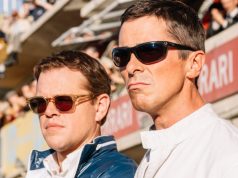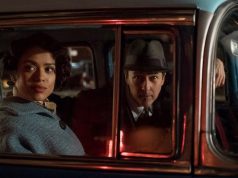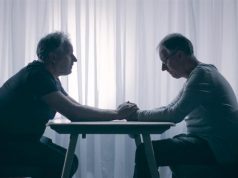I’ve heard God’s omniscience explained in this manner: Suppose all of time were laid out in a line so that everything was visible all at once. The explanation goes that God sees it that way, viewing every human being’s past, present and future all in one glance, not limited by chronology or point of view.
Gus Van Sant’s chilling, devastating “Elephant” manipulates time the same way, or at least the analogy is the best one I can come up with to explain how the film feels. We see the same several minutes repeated from different people’s perspectives as time overlaps and intersects itself, all leading up to another several minutes that are dealt with the same way. When it is done, we get the sensation of having glimpsed God’s “big picture” view of the world, of seeing everything all at once rather than one moment at a time, one point of view at a time.
It is a fictional film, but it is based on the 1999 Columbine shootings. I suspect Van Sant did not make a film dramatizing that tragedy specifically because he wanted his story to have more universal appeal, and because he wanted it to be as free as possible from the politics inherent in recreating an actual event. He made the right decision, I’m sure. Had he dramatized the real Columbine, with actors playing real people, the drama of the film would have drowned in a sea of debate over fairness and historical accuracy.
So “Elephant” is set at an Oregon high school, almost exclusively on the morning that will end with two boys walking into the library and opening fire. The only scenes not taking place at, or on the way to, school are the ones featuring the two killers, Alex (Alex Frost) and Eric (Eric Deulen). Their scenes are set at Alex’s house, and they are not directly attached to the school scenes: Some are flashbacks to days earlier, some obviously occurred this morning. The killers are thus set apart from their student counterparts, made to exist almost in a separate reality. Eric, in fact, is never seen among his classmates until he begins shooting them.
Van Sant has gone to extraordinary measures to achieve authenticity, and it is the film’s number one virtue. He cast real high school students — non-professionals and mostly non-actors — in all the major roles, and allowed them to improvise somewhat, so the acting feels completely natural. They look and talk like the ordinary high school students they are, which would have come off extremely dull if they weren’t filmed so artfully, and directed so skillfully, and placed in a movie being told with such an eye for emotional realism.
There is little cutting within scenes; mostly the camera simply follows the subjects around like an impartial observer, even if they are doing nothing more interesting than walking down a hallway. And for the most part, that’s what the students are doing: walking down hallways, chatting with friends, gossiping about each other, being late to class. Quiet underclassman John (John Robinson) is worried about his dad’s alcoholism and is the first student to spot Alex and Eric entering the schoolyard. Nathan (Nathan Tyson), a jock, turns a few girls’ heads on his way to meet up with his girlfriend, Carrie (Carrie Finklea), whom he invites on an outing later that day. Elias (Elias McConnell), a budding photographer, asks students to pose for him, then develops the shots in the school’s dark room.
And so on. In setting the stage for the horror that will occur, Van Sant achieves maximum suspense by not setting anything up. It’s an utterly normal day, interesting to watch simply BECAUSE it’s so normal, so much like days we’ve had ourselves but that we seldom see recreated so vividly.
Van Sant does occasionally fall victim to his own genius, as when he includes a lengthy, LENGTHY shot of a darkening, stormy sky for about 20 seconds longer than he needs to. It is pretentious moments like that when we realize how risky the whole endeavor was to begin with, and how well Van Sant has pulled it off generally.
I must also take issue with two details about Alex and Eric’s lives: that they play so-called “first-person shooter” video games, and that they sit in rapt attention while a Hitler documentary is on television. I don’t doubt that some killers do, and perhaps even the Columbine ones did, play violent games and fancy themselves neo-Nazis. But to simply drop those details into the film without exploring whether they are causes of the boys’ urges, effects of them, or unrelated altogether, is irresponsible. It would seem Van Sant is suggesting they are causes, which would be a lame oversimplification.
With most of the film spent establishing the students and their ordinary, likable personalities, the horror we feel when they start becoming victims is gut-wrenching. I am reminded of slasher films, where most characters are presented as loathsome or stupid in order to make their subsequent deaths palatable, even entertaining. Here, the opposite is done. Every character is made sympathetic simply by being real, by being himself, by being human. This includes, startlingly, Alex and Eric. No attempt is made to have some characters more “deserving” of injury because they are “bad guys”; there are no heroes, turncoats or villains. There are only people. This is one of the most haunting, compelling films of the year.
A- (1 hr., 21 min.; )





